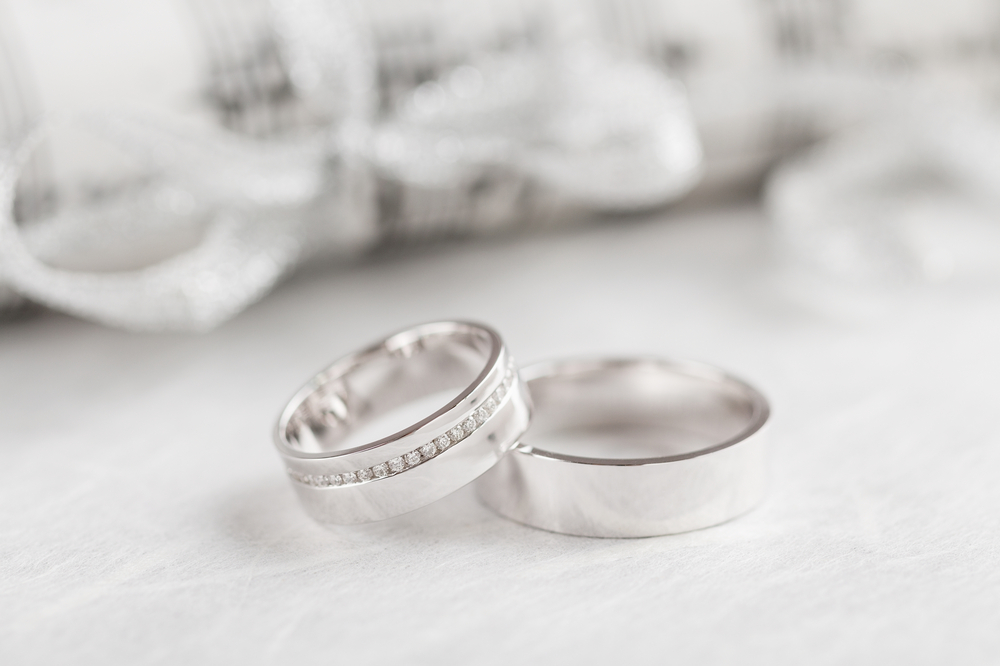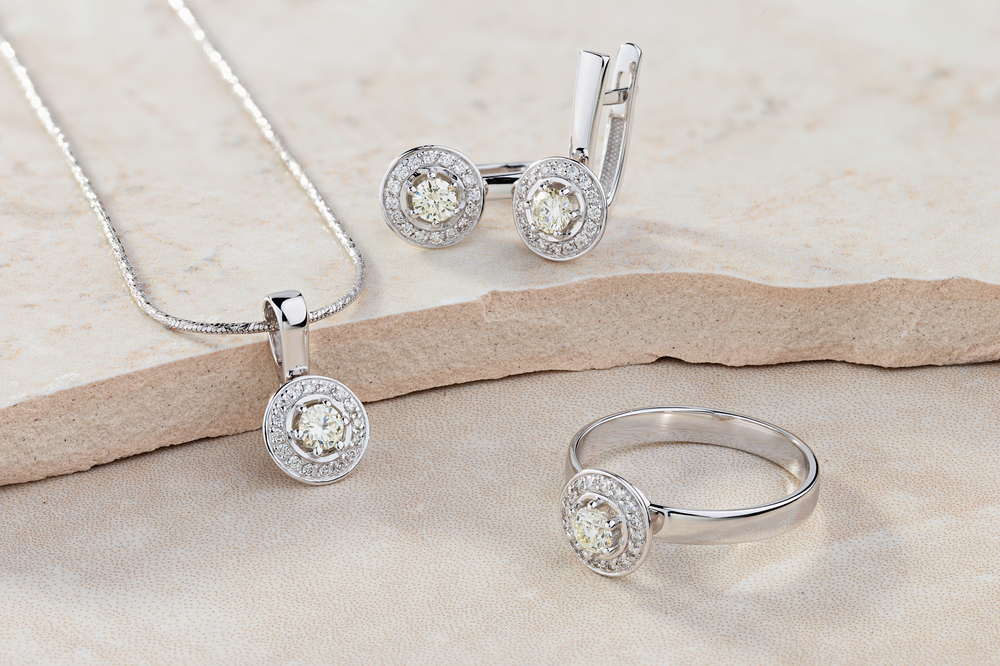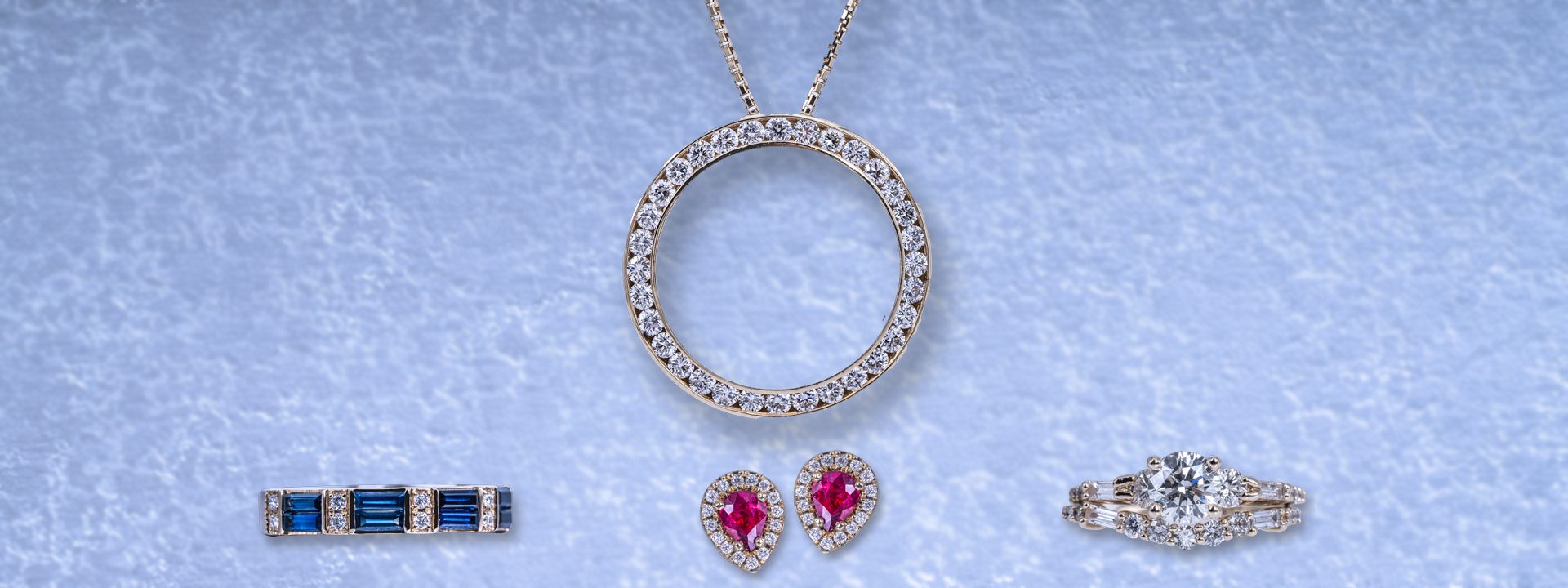The 19th century saw the invention of white gold. At the time, manufacturers alloyed gold with palladium. It wasn’t commercially available until 1912, when it was issued as a patent in Pforzheim, Germany, subsequently gaining popularity as a more affordable alternative to platinum in the mid-1920’s. Essentially, it was gold alloyed with copper, zinc, and nickel. Nowadays, a metal belonging to the platinum family often replaces nickel because it prevents skin allergies and other allergic reactions. Depending on the recipe, the alloy can possess various characteristics when it comes to ductility, malleability, and hardness; in turn, different alloys can be used for different purposes.
1940s & WWII
World War II interfered with jewelry making in the early 1940s. precious metals were either rare or used for warfare purposes. In some cases, there was an explicit ban on selling precious metals for nonmilitary purposes. This especially applied to platinum. At the time, low-carat gold alloys were used, and they had a higher percentage of copper. Asa result, the gold gave off a subtle, yet perceptible reddish tinge. In addition, different alloys results in different colors appearing within one gold piece.
Reintroducing Older Designs
The techniques used for producing gold were weaving, braiding, and coiling. Consequently, certain patterns, such as resilla, cannetile, and lacy filigree, made a comeback. The design was accentuated by juxtaposing different textures, for example, matte and bright finishes. Eventually, gold was in widespread use for jewelry making in the 1940s and 1950s.


Jewelry Remodeling Instead of Buying
Since the stocks of pre-war metals and gemstones were scarcely employed, customers usually had to remodel the jewelry they already owned rather than buy new. Interestingly enough, those who were really keen on having a brand-new piece of jewelry had to provide the precious metals themselves. In France, however, the State confiscated a considerable percentage of these private precious metal stocks to be used for war purposes.
Introducing New Techniques
New techniques arose, such as those for creating thinner gold sheets, while ensuring the undiminished scale with the underlying base metal. Moreover, consumers started placing their trust in precious metals and gemstones rather than currency. Strangely enough, the more austere the fashion became in those struggling war years, the greater was the need for bejeweled feminism.
Some countries were completely shut off from the gemstone supply lines coming from South Africa, India, and Burma, while other received only modest and occasional supplies. As a consequence, synthetic and faux gemstones started featuring in novel jewelry designs. Gemstones like citrine, amethyst, aquamarine, and topaz enabled a wide palette of hues and a range of sizes. Higher-carat gems such as diamonds, rubies, or sapphires were extremely rare. Jewelers used small precious gems in pavé and invisible settings with the aim of creating a massive-looking piece comprised of a number of small ones. It was common to blend gemstones in order to achieve gradual color changes within brooches or bracelets.
Post-WWII Trends
While pre-WWII designs typically paired colored stones with diamonds, the scarcity of gemstones resulted in the combinations of colored stone with no diamonds. Rubies and sapphires were now paired with moonstones, aquamarines, and other chunkier, paler gems. Vivid gems were accentuated (and sometimes even replaced) by enamels. This results in a painterly fashion style that brought inventive highlights to the underlying gold. Transparent enamel was used by Boucheron to create a series of floral necklaces.
White Gold Jewelry in San Diego
If you are looking for a one-of-a-kind white gold piece, be sure to stop by Leo Hamel Fine Jewelers. We offer an exquisite collection of white gold jewelry in San Diego, ranging from antiques and vintage designer pieces to brand new models. Our showroom is open every day through Christmas Eve. Make the best of our extended holiday hours and browse through all of the wonderful pieces that we offer. We are here to help you find something truly special!

